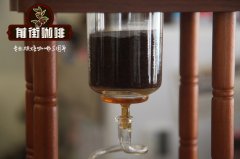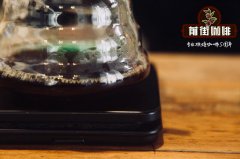Introduction of Santuario Coffee producing area in Colombia | Coffee processing Technology of Santuario

Santuario is a town in Risaralda province, Colombia. The town is located in the eastern part of the western mountain range of Cordillera, which extends from the north of Antioquia to the border with Ecuador. The town was founded in 1886 and agriculture provides economic power for the area. The high green hills provide an ideal location for coffee production.
The members of the association Asocafe Tatama, which has been active in the area since 2003, are producers of the lot. The association was formed when small farmers in the region began to talk about working together to improve their income and quality of life in rural areas. The purpose of their association is to standardize planting and production methods by increasing technical assistance in order to achieve higher quality or certification. Starting with about 70 producers, the organization has grown into an organization representing 206 active members by 2016.
Through growing social networks and improved communication, Asocafe Tatama can help its members stay motivated and supportive despite living in the countryside. They have also done a lot of work to promote coffee production and become a sustainable lifestyle for the younger generation.
The word "Tatama" is taken from the National Natural Park Tatam á, a national park bordering the city of Santorio. The park is strictly protected and is considered to be one of the best nature reserves in Colombia.
Coffee is carefully prepared from planting to drying, followed by cup filling and quality evaluation. For the future, the association is looking to invest in their laboratories and train their cup-shaped cans so that they can choose the best batches to be produced for micro-batch sale.
Mercanta's export partners have partnered with Asocafe Tatama to commercialize specialty coffee throughout the region, resulting in some amazing coffee from the region, which has the best natural coffee growing conditions and takes full advantage of the Group's efforts to improve quality. A team of experts on a cup of coffee will provide feedback on the coffee and will pay if the producer's coffee is sold at a higher profit. Support has also been given in the area of social well-being.
Farm: all kinds of small farms
Variety: Castillo (60%), Colombia (20%), Kaddura (20%)
Treatment: fermented for 14-48 hours, then dried in the sun or dried in a machine
Altitude: 1500 to 1700 m above sea level
Owner: all kinds of small farmers
Town / city: Santuario
Region: Risaralda
About processing:
Each family usually carries out its own harvest with the help of its neighbors. After picking red ripe cherries, they are pulped through a manual pulper on a family farm (usually near the main house). The waste from this process will be used as natural fertilizer for coffee trees in the future. Then ferment the coffee for 14 to 48 hours according to the weather and the location of the farm, then wash it with cold clean water.
After this process, many farmers dry parchment on the terrace or on the roof of the house (elbas). Farmers in Huila have designed a mechanism through which they can slide the roof with pulleys to cover coffee on rainy days. Some farmers dry their coffee on parabolic beds in the sun. These parabolic beds, known locally as "marquesinas", are a bit like a "hoop house" greenhouse, ensuring the flow of air through the openings at both ends, protecting the parchment from Rain Water and fog during the drying process and preventing condensed water from dripping on the floor. Dried beans.
Raw beans are shipped directly by the manufacturer to the warehouse of our export partners, where dry grinding will eventually be carried out. After receiving the coffee, the coffee will be carefully graded and cup tested.
Important Notice :
前街咖啡 FrontStreet Coffee has moved to new addredd:
FrontStreet Coffee Address: 315,Donghua East Road,GuangZhou
Tel:020 38364473
- Prev

Introduction of coffee producing areas in Tolima Province, Colombia | introduction to the flavor characteristics of coffee in Tolima
Tolima is the third largest coffee producing region in Colombia, accounting for 12 percent of the country's annual output. The area is located in west-central Colombia and is completely engraved by the Andes and the Magdalena River basin, which makes it quite remote and inaccessible. Until recently, many coffee-growing areas were considered dangerous because of the presence of the Revolutionary Armed Forces of Colombia. Today, Tol
- Next

Introduction of Narinho producing area in Colombia | introduction of flavor characteristics of Narinho coffee Narino
The Narinho region is located in the southwest corner of Colombia, merging the central and western mountains of the Colombian Andes. The volcanic soil of Nari ñ o province (state) is rich and the rainfall is good. The coffee was picked there by the locals. Narino is surrounded by Tolima,Cauca and Huila, which together make up the southern growing area. Crops from April to June and October
Related
- Detailed explanation of Jadeite planting Land in Panamanian Jadeite Manor introduction to the grading system of Jadeite competitive bidding, Red bid, Green bid and Rose Summer
- Story of Coffee planting in Brenka region of Costa Rica Stonehenge Manor anaerobic heavy honey treatment of flavor mouth
- What's on the barrel of Blue Mountain Coffee beans?
- Can American coffee also pull flowers? How to use hot American style to pull out a good-looking pattern?
- Can you make a cold extract with coffee beans? What is the right proportion for cold-extracted coffee formula?
- Indonesian PWN Gold Mandrine Coffee Origin Features Flavor How to Chong? Mandolin coffee is American.
- A brief introduction to the flavor characteristics of Brazilian yellow bourbon coffee beans
- What is the effect of different water quality on the flavor of cold-extracted coffee? What kind of water is best for brewing coffee?
- Why do you think of Rose Summer whenever you mention Panamanian coffee?
- Introduction to the characteristics of authentic blue mountain coffee bean producing areas? What is the CIB Coffee Authority in Jamaica?

